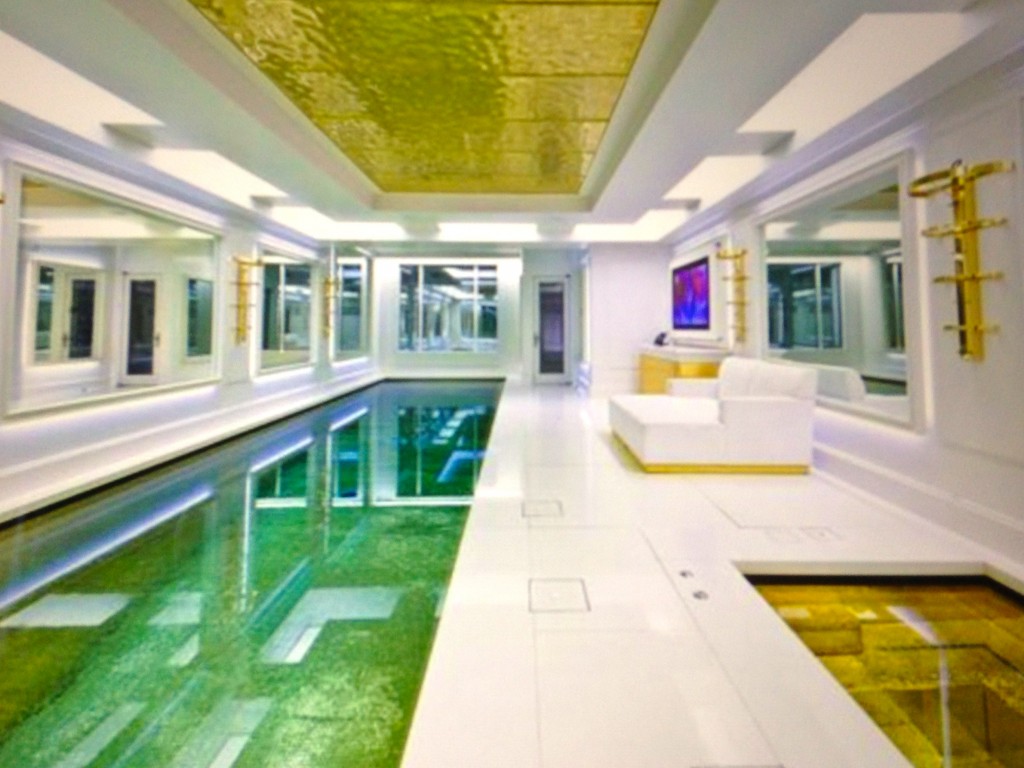Prime Central
Overseas ‘HNWIs’ colonise
Prime Central London
If you fancy a seven-bedroom, six-storey home with a gold-lined swimming pool, then a property in the ‘exclusive’ Belgravia enclave of central London should suit you nicely.
This Eaton Square palace, disguised as a terraced house, looks ‘oh-so-yooh’ – especially if you’ve a cool, spare £70 million burning a hole in your pocket, writes Paul Coleman.
The £70m price tag for London’s most expensive home in 2013 tops even the Candy brothers’ One Hyde Park apartments…(still known to the milkman and other emergency services as ‘100 Knightsbridge’). The Treasury can expect to receive £5m in Stamp Duty once someone – you(?) – meets the Eaton Square asking price. Note the investment potential. This ‘super-prime’ residential property, marketed at £6,500 per square foot, last sold for £33m in 2009 – and for a mere £9.5m in those good old pre-financial meltdown days of 2005.
But you don’t need to look at ‘super-prime’ to see how central London and south-east London properties have created a small ‘us’ and a massive ‘them’ tiered housing market. A relatively small family home in upper middle class Putney in west London could buy a whole street in a working class northern English town like Sunderland.
A £5m home in a rich enclave like St George’s Hill in Weybridge – a London ‘satellite town’ in the commuter belt county of Surrey – could buy a street of homes in Glasgow’s Ibrox district.
The combined property values of London boroughs – Barnet, Bromley, Camden, Ealing, Hammersmith & Fulham, Kensington & Chelsea, Lambeth, Richmond upon Thames, Wandsworth, and Westminster – was estimated in 2013 at £552 billion, equal to the total property values of countries – Northern Ireland, Scotland and Wales. The London and south-east England property market is worth an estimated £2 trillion – 40% of the UK market by value. Such stats stun folk on average and lower incomes but excite estate agents like Savills and Knight Frank.
Beneath this prosperity gloss festers London’s chronic shortage of genuinely affordable homes. Most Londoners are now simply unable to afford to buy or rent a home in their 21st Century capital. If you can afford Eaton Square, posher Putney or a Weybridge chunk, you’re most probably a foreign investor – and most definitely a portfolio-carrying ‘HNWI’, the latest acronym soup flavour.
Since ‘Big Bang’ in 1987 humanity has endured the ‘Yuppy’, the ‘Young Urban Professional’ puppy and the ‘DINKYs’ – ‘Double Income No Kids Yet’. And, latterly, the CC Media* demonises working people on lower incomes as ‘Chavs’ – or ‘Council Housed And Violent’, according to some definitions. HNWIs, or ‘High Net Worth Individuals’, refers to Planet Earth’s supremely affluent folk who reside in Hong Kong, Melbourne or Mumbai but who can also afford to buy second and third investment properties in New York, Paris, Rio de Janeiro, Shanghai, Singapore and, of course, ‘prime resi’ central London.
Property agent Knight Frank reckons foreign HNWIs bought 73% of new Prime Central London Residential homes in 2012 – with Singaporeans the largest group. London rates joint second with Hong Kong in a Savills survey of the best cities for HNWIs to buy property. Rio is cheapest for HNWIs to buy a £2m property with taxes and costs levied up to £52,000. But agents crow that London offers HNWIs lower crime, better schools and, crucially, sustainable property values.
However, by definition, if HNWIs prevail, how will indigenous ‘Low Net Worth Individual’ Londoners find a decently priced place to live in their traditional central London neighbourhoods, where their families have lived for generations?
Well, another social classification caricature – ‘Generation Rent’ – was invoked in 2013 by housing professionals and eager CCM headline writers. Last Spring (4 March, 2013) London’s 15 biggest housing associations vowed to build 13,000 ‘affordable’ homes by 2015 for ‘Generation Renters’ – Londoners in their 20s and 30s earning average annual incomes (estimated at £26,000) – who can’t raise the average £98,000 deposit needed to buy a decent family home in London.
The ‘G15’ group of London housing associations aims to provide some 5,100 properties for rent at market prices offering secure tenancies. G15 associations will use profits from rents to fund more ‘affordable’ homes. “The average home in London costs more than £400,000 and is 15 times the median income for Londoners…Those without access to capital may become lifetime renters,” says the G15.
But are G15 affiliates moving into mainstream ‘for sale’ and ‘for rent’ property markets at the expense of their social mission to provide genuinely ‘affordable’ homes for Londoners in real need?
G15 chair and Affinity Sutton housing association chief executive, Keith Exford, says: “The only profit to be made is from the sale of stock at a later stage as values rise.
“A well-managed, reputable private rented sector is an important part of our offer to London.”
* CCM = Corporate Controlled Media
© Paul Coleman, London Intelligence, London 2013

